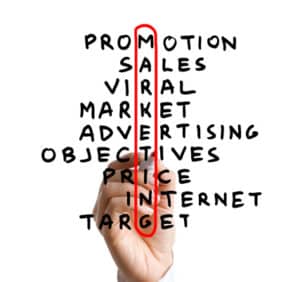It’s impossible to lead your company to succeed without building a culture focused on customer relationships. Modern consumers don’t hide their preference for brands that offer quality experiences: a Walker study predicts that this factor should soon become more important than the price and product in the buyer’s decision process.
As a potential key brand differentiator, providing high-level experiences should be one of the company’s top priorities. And you can’t do that without considering client expectations.
It’s essential to know how to communicate efficiently with the customer from onboarding. This is the only way you can understand and meet their needs, which strengthens your brand’s reputation and may even result in new business opportunities.
Managing client expectations requires a strategic approach. Do you want to know how to apply it? Check out these 9 tips!
- Set expectations from the start;
- Invest in good communication;
- Be transparent about processes;
- Define your goals;
- Create official records about any deals;
- Include the client throughout the process;
- Rely on the right tool to do so;
- Learn how to say no when necessary;
- Know how to prove your value.
Keep reading and learn more!
Download this post by entering your email below
How to manage client expectations
1. Set expectations from the start
Although many businesses fall into the temptation of making promises to customers, this is not exactly a good idea.
After all, we know that any project could face unforeseen events that would push back the deadline or even compromise its completion. Whatever small the chance is, it can’t be ruled out.
It’s important to value transparency from the beginning, so as not to cause expectations that you can’ t meet.
Therefore, communicate with your customer and make it clear to what extent your service or product can help. Together, you can set achievable goals and ensure that everyone is on the same page.
2. Invest in good communication
For the whole process to be effective, you must know how and where to communicate with your audience. That’s why it’s never too much to stress the importance of building and using a buyer persona.
The idea is to create a character that represents your dream customer. The persona borrows some of its elements from the target audience but it is way more specific.
Besides demographic characteristics, it must gather other peculiarities, such as the pains, preferences, motivations, and habits of your public.
Based on it, you will know, for example, what style of language your teams should employ when interacting with the customer. You will also understand what are their biggest pains and desires, enabling a more personalized and effective experience.
Also, the persona indicates the channels most used by your consumer, which facilitates your communication efforts. If your audience is prone to interact with brands via Instagram, for example, investing in social media presence should become a priority.
3. Be transparent about processes
Just as you want to follow the consumer’s journey, they want to follow the development of your company’s processes. Adopting a transparent posture is fundamental to obtain the customer’s trust and manage their expectations. So, offer constant updates on their different requests and resolutions.
Imagine that you run a marketing company hired to increase the generation of leads in an enterprise.
It’s essential to periodically update the status of the strategy, showing what has already been achieved, and estimating the next steps.
Whatever are the results, it’s vital to structure a clear and informative presentation, using data to reinforce what is being said. An excellent way to streamline this effort is to count on data visualization software to create easy-to-understand reports.
4. Define goals
To improve consumer satisfaction, establish the objectives that the project must achieve. Setting clear goals is useful to stimulate the productivity of your team and can also serve as a basis for customer expectations.
You must only work with realistic targets, to avoid unnecessary frustrations. If you are to conduct the process of setting goals, a good idea is to rely on the SMART guideline.
It’ s an action plan specifically used to set constructive goals for your business.
To do this, the guideline applies 5 principles, whose initial letters form the acronym SMART. According to the model, your goals should be:
- Specific: clear and unambiguous;
- Measurable: easy to measure from predetermined metrics;
- Achievable: possible to achieve;
- Realistic: consistent with the reality of your business and the market;
- Timely: structured in a timeline with fixed deadlines.
5. Create official records about any deals
Nothing is more important than to remain true to your words. Unfortunately, however, it’s not possible to know whether everyone enjoys the same honesty.
Nothing prevents someone from claiming that your company has not fulfilled its commitments unless you can count on official records.
So, document all deals made by your company, making the specifics of each situation very clear. Documents should be unambiguous in stating what the initial terms of an agreement were, besides clearly indicating whether both parties respected them.
In addition to being vital from a legal point of view, official records are documents that can be used to provide updates to the customer. After all, they indicate what the expectations were when signing the contract, showing when and where they were met.

6. Include the client throughout the process
This goes a little beyond just offering updates on the process. Including the client means giving them space to express their considerations and participate directly in the development of the project. Naturally, it’s essential to establish terms and conditions, indicating the limits that both parts must respect.
When you include the consumer in the process, you reinforce the idea of transparency and generate conditions for a more lasting relationship. Moreover, the strategy can provide surprisingly useful insights not only for the improvement of your processes but of your company as a whole.
7. Rely on the right tool to do so
Technology plays an essential role in several areas of a business, both in strategic and operational management. When it comes to managing client expectations, some tools can help you to keep track of all the stages of a project. That way, it’s easier to focus on managing client expectations.
Visually’s presentation solutions, for example, allow the use of data storytelling to facilitate both your understanding and the client’s. You can access a collaborative platform and count on the best design and writing professionals to create detailed and informative presentations.
8. Learn how to say no when necessary
We know it’s hard to turn down an opportunity when it knocks on your door. Still, one of the most important tips for you to manage expectations from clients is knowing when to say no.
Accepting projects and requests that go beyond your capabilities at the moment will generate nothing but problems.
The reasons for rejecting a new client or project are varied. You may not have enough staff to handle more than a certain number of accounts without overwhelming your teams. By doing so, you would put productivity and brand image at risk.
It’s also possible that you may need to refuse the client’s requests throughout the development of a project.
When they notice an increase in content performance, for example, they may require you to expand the number of professionals working on the strategy. The point is: if you think it’s not feasible, you must say no.
That is precisely the kind of situation that makes transparent communication with the client so important.
If you are not clear when setting goals that can be achieved, the consumer may submit unrealistic requests. If this happens, you should politely inform them that you are not able to perform what is being asked and, if possible, present alternative solutions.
9. Know how to prove your value
To attract, convert, and retain customers, you must prove the value of your solutions, especially in markets with high levels of competition. To do so, it’s essential to work with data analytics.
Presenting figures and stats is the best way to prove that you’ve achieved positive results and helped your clients pursue their goals.
You know how it goes, right? When you approach a lead for conversion, you probably talk about how your brand has helped customers to grow. However, that information is just empty words if concrete and accurate indicators don’t accompany it.
Similarly, the updates you give to existing customers should be based on pre-established indicators.
For example, if one of the campaign’s goals is to increase the conversion rate, a presentation focused on recent metrics will help show the value of your business.
Managing client expectations is not one of the easiest tasks, as it includes people with different characteristics and priorities.
However, everything becomes easier when you know your customer deeply and can establish transparent and efficient communication from the beginning.
Ready to improve the way you manage customer expectations? You can rely on Visually to keep track of all the stages of your project. Contact us and get a quote!







